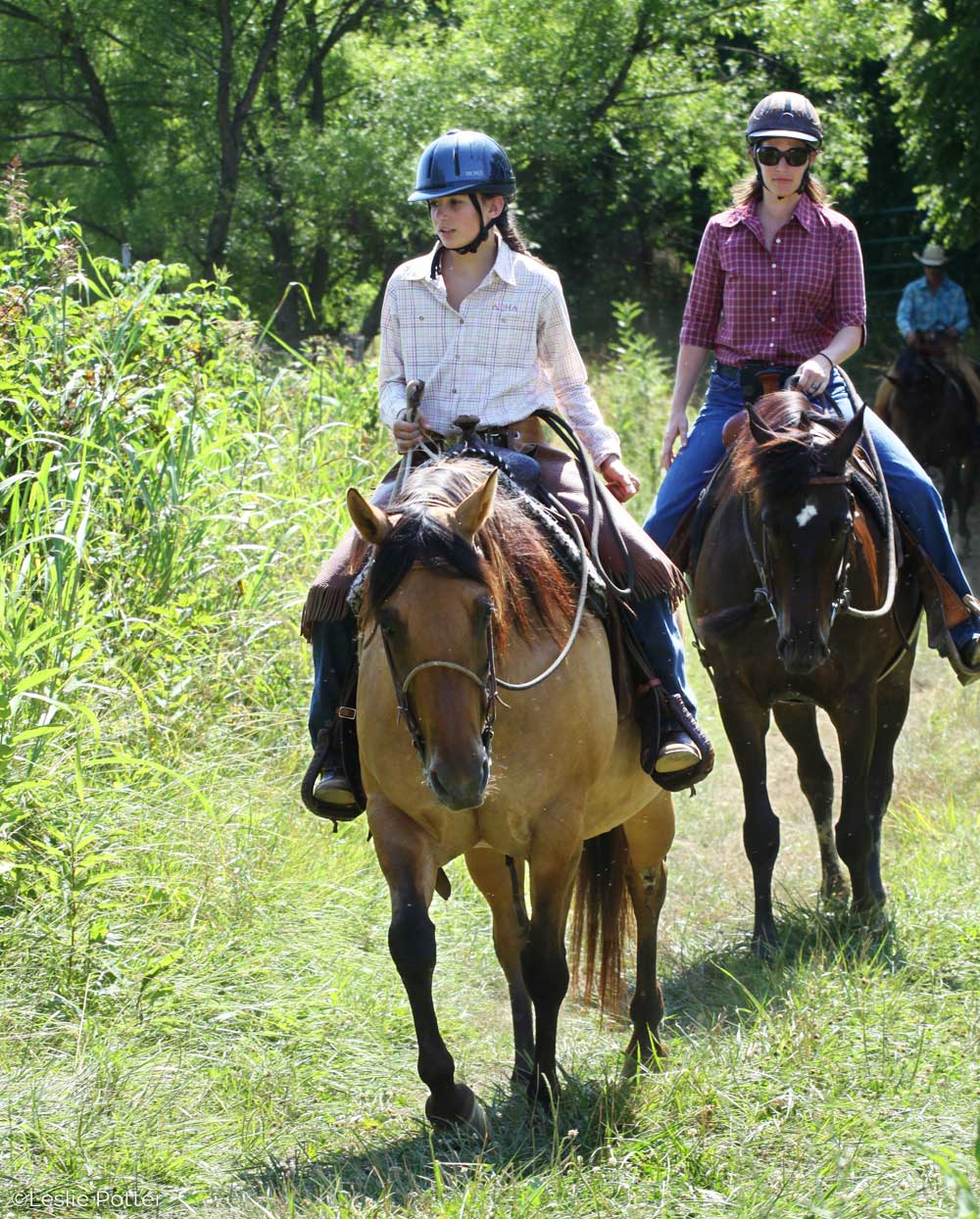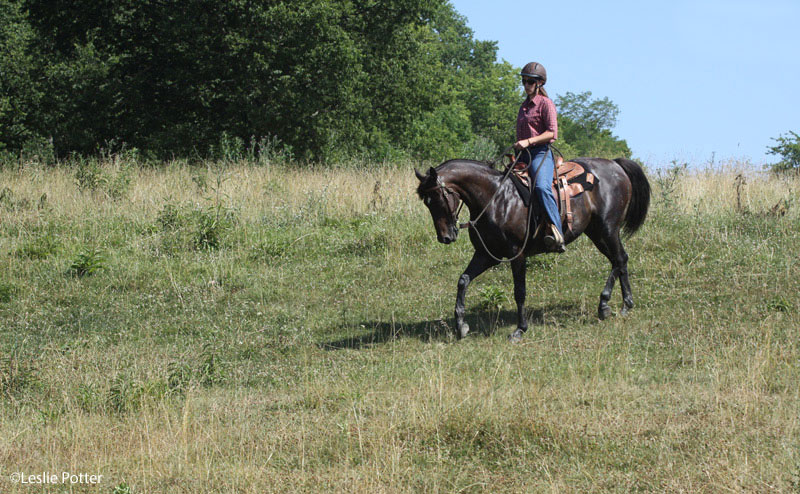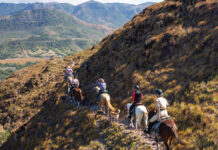 As you ride your horse on hills, you’ll need to keep your center of gravity aligned with his so that you don’t lose your balance or cause your horse to work harder and lose his balance. In simple terms, you’ll lean forward to go up a hill and lean back when going down.
As you ride your horse on hills, you’ll need to keep your center of gravity aligned with his so that you don’t lose your balance or cause your horse to work harder and lose his balance. In simple terms, you’ll lean forward to go up a hill and lean back when going down.
Going Uphill
A horse moving up a steep hill uses his hindquarters to push his body up, while also lengthening his neck forward and shifting his center of gravity forward. His poll drops below the height of his withers and his front legs reach out with each step. To give him some help, you’ll lean slightly forward.

Need a visual? Picture how trees grow on the side of a hill. Tree trunks grow straight toward the sky, even if they’re growing on a steep hillside. If the trees grew at any other angle, they’d fall over. When you’re riding on hills, keep your whole body parallel to the trees—picture a line through your ears, shoulders, hips and heels.
Make sure to give your horse a loose rein so that he can use his neck as a lever to help him move up the hill. Keep just enough rein connection that you can cue your horse if necessary. It’s OK to grab onto your horse’s mane halfway up his neck if the hill is steep—this will help you keep your balance and position.
If you’re riding on backcountry trails, it’s often safest to ride straight up or down a hill. If you ride a sideways path up or down a hill, it’s possible for your horse to slip and fall to the side, potentially trapping your leg underneath him.
Pace Yourself
Be sure to rate your horse’s speed as he goes up a hill. It’s usually best to walk up steep hills—more speed equals more risk of slips and trips.
If you want to ask your horse to jog or lope up a gentle hill, that’s OK. Again, just make sure that you ask for the speed and your horse doesn’t decide on his own that faster may mean easier.
If you do speed up, make sure all the riders in your group feel good about it and agree to the speed change.
If you do speed up, make sure all the riders in your group feel good about it and agree to the speed change. You don’t want to leave your trail riding buddies in the dust as you lope up a hill—you may make other horses worry that they’ll be left behind, leaving their riders in a very unsafe situation on a bolting or panicking horse.
Going Downhill
A horse traveling down a hill flexes his hocks more to shift his weight back and stay balanced. By carrying more weight on his hindquarters, the horse reduces his risk of falling forward.

To ride down a hill, loosen your reins to give your horse freedom to move his head and to look at the footing. Your horse will use his head and neck for balance as he moves down a hill. You want your horse to calmly negotiate his path and stay balanced.
Your job is to lean back slightly. Make sure to not only lean back but to move your feet forward slightly. Don’t overdo it! Look at the trees around you and match the same angle with a straight line through your ear, shoulder, hip and heel.
Speed Control
Horses often break into a trot when going downhill. Moving with momentum is easier than using muscles to carefully pick each step. Pay attention to your horse. If he starts to speed up, ask him to slow down before he takes a step into an unauthorized trot.
Don’t wait until he breaks into a trot—it’s much harder to stop the downhill momentum once it’s started. Also, don’t constantly pull on the reins to keep your horse slow. Only correct him if needed, then return to riding with a loose rein.
If there’s a chance that the trail may be slick, it’s especially important to go slow. You may even need to dismount and walk your horse down a hill that is slippery and steep. If you do decide to lead your horse down a hill, be sure to not walk directly in front of him, especially if the hill is steep. If he falls down the hill, you don’t want to be in the way. Ask your horse to lead behind you and slightly off to the side. If you know your horse and are aware of the trail, you’ll be able to walk slowly and safely to the base.
Riding in a Group
If you’re riding with a group up a hill, make sure to space yourselves out so that all the horses can make a continuous push to the top. If there’s not enough space between horses, a faster horse may get stopped behind a slower horse. It’s sometimes tough for horses to get going again after stopping on a hill.
If needed, let your horse stop at the top to rest and catch his breath before continuing on your ride. Carrying a rider up a hill can be hard work for your horse! However, make sure not to stop until you’re out of the path as others arrive at the top.
This article originally appeared in the May/June 2019 issue of Young Rider magazine. Click here to subscribe!





